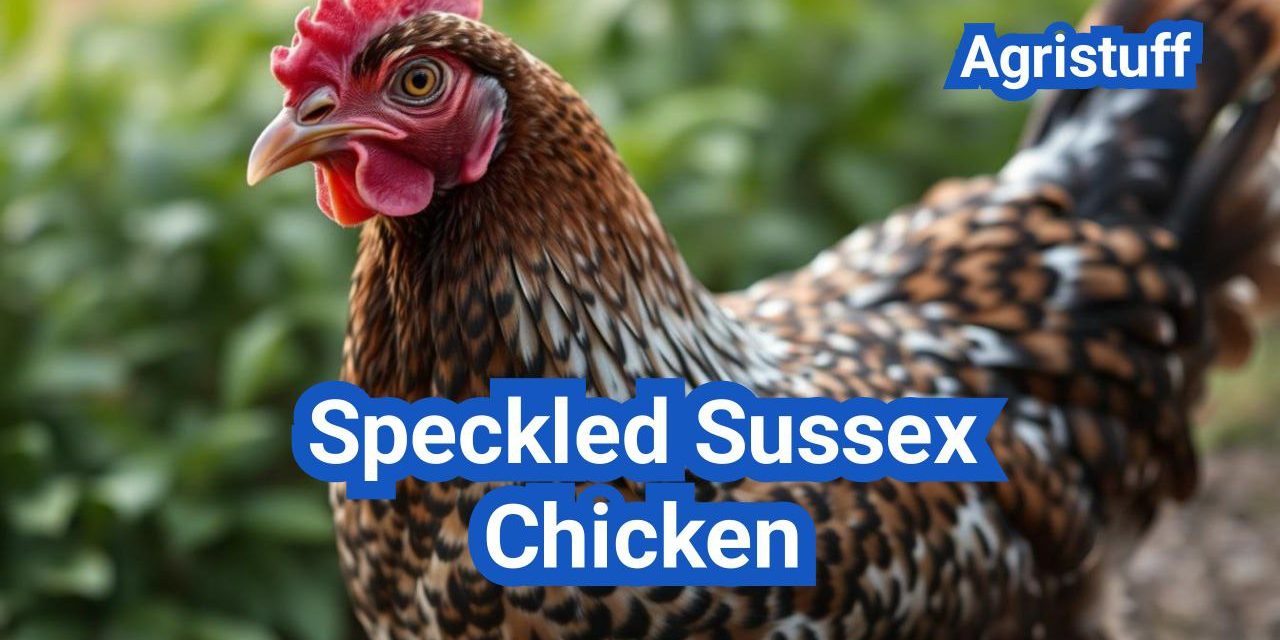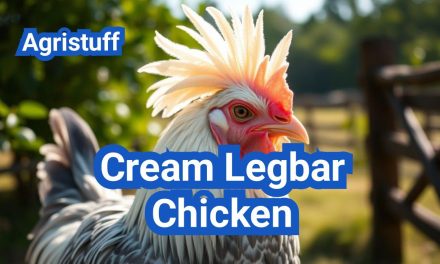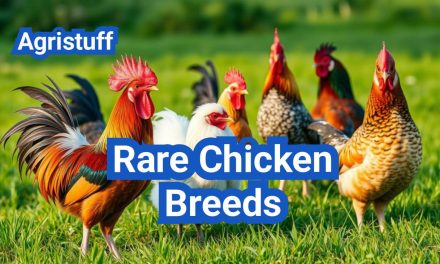The Speckled Sussex Chicken is a beloved heritage breed among backyard chicken keepers. Known for its striking plumage and delicious eggs, this breed is a popular choice for those looking to add a dual-purpose chicken to their flock.
This heritage chicken breed is prized for its friendly temperament and high egg production, making it an excellent choice for families and small farms. As one of the many sussex chicken varieties, the Speckled Sussex stands out for its unique appearance and versatility.
Key Takeaways
- A heritage breed known for its striking plumage and delicious eggs.
- Prized for its friendly temperament and high egg production.
- An excellent choice for families and small farms.
- A popular dual-purpose chicken breed.
- One of the many sussex chicken varieties.
The History and Origin of Speckled Sussex Chickens
Sussex County, England, is the birthplace of the Speckled Sussex chicken, a breed with a history as rich as its speckled plumage. The story of this beloved chicken begins in the ancient lands of Sussex, where it was first bred for its unique characteristics.
Ancient Roots in Sussex County, England
The Speckled Sussex chicken has its roots deeply embedded in the history of Sussex County, England. This heritage breed was developed by crossing various local breeds, resulting in a robust and prolific layer. The county’s rich agricultural heritage provided the perfect backdrop for the breed’s development.
Development of the Speckled Variety
The speckled variety of the Sussex chicken was developed through careful breeding practices. By selecting birds with the desired speckled plumage, breeders were able to establish a consistent pattern. This unique appearance, combined with their excellent egg-laying abilities, made them a favorite among poultry keepers.
Journey to Modern Popularity
Over the years, the Speckled Sussex chicken has gained popularity worldwide due to its friendly nature, hardiness, and excellent egg production. As a heritage breed, it has been preserved and promoted by poultry enthusiasts and breeders. Today, it remains a popular choice for backyard flocks and small farms, cherished for its historical significance and practical qualities.
Physical Characteristics of the Speckled Sussex Chicken

The Speckled Sussex chicken is known for its striking appearance and robust build. This breed is a favorite among backyard chicken keepers and poultry enthusiasts due to its attractive looks and impressive size.
Size and Weight Expectations
The Speckled Sussex is considered a medium to large-sized breed. Roosters typically weigh between 9-11 pounds, while hens weigh between 7-9 pounds. Their size makes them a substantial addition to any flock.
Distinctive Speckled Plumage Pattern
One of the most striking features of the Speckled Sussex is its speckled plumage pattern. The feathers are primarily white or light-colored with distinctive black tips, creating a speckled effect. This unique pattern makes the Speckled Sussex easily recognizable.
Body Type and Structure
The Speckled Sussex has a sturdy, rectangular body shape with a broad back and well-developed breast. Their wings are of moderate size, and they have a distinctive single comb. The overall structure is robust, contributing to their hardiness and foraging ability.
Differences Between Hens and Roosters
While both hens and roosters share the same overall body type, there are some key differences. Roosters tend to be larger and more muscular than hens. They also have more pronounced hackle feathers and a more vibrant comb. Hens, on the other hand, are generally more compact and have a more subdued appearance outside of the breeding season.
Understanding Speckled Sussex Chicken Temperament
The Speckled Sussex chicken is renowned for its exceptional temperament, making it a favorite among backyard chicken keepers. Their friendly and docile nature makes them an excellent choice for many families.
Friendly and Docile Nature
Speckled Sussex chickens are known for their gentle disposition. They are easy-going and tend to get along well with other chickens and humans alike. This friendly nature makes them a great addition to any flock.
Social interactions with humans are a significant aspect of their temperament. They are often described as being very personable and enjoy human company.
Social Interactions with Humans
These chickens are not only friendly but also quite curious. They tend to follow their owners around the yard and can become quite affectionate. Many owners report that their Speckled Sussex chickens will often come to greet them at the gate.
Flock Behavior and Hierarchy
In terms of flock behavior, Speckled Sussex chickens generally fit in well. They establish a pecking order within the flock but tend to do so without excessive aggression.
They are not typically at the top of the hierarchy but are not usually at the bottom either. Their docile nature helps maintain harmony within the flock.
Suitability for Families with Children
One of the key reasons Speckled Sussex chickens are so popular is their suitability for families with children. They are patient and can be quite gentle, making them an excellent choice for families.
However, as with any chicken, it’s essential to teach children how to handle them gently and with care.
Egg Production Guide for Speckled Sussex Hens

Speckled Sussex hens are not only visually appealing but also exceptional layers, providing a steady supply of eggs throughout the year. Their egg-laying capabilities, combined with their friendly nature, make them a popular choice among backyard chicken enthusiasts.
Egg Color, Size, and Quality
Speckled Sussex hens lay large to extra-large brown eggs. The brown color of the eggs can vary slightly in shade, but they generally maintain a rich, warm tone that many egg enthusiasts find appealing. The quality of the eggs is typically high, with strong shells and a consistent size.
Production Rate and Annual Yield
On average, a healthy Speckled Sussex hen can produce around 200-250 eggs per year. This makes them a reliable choice for those looking to maintain a steady egg supply. Their production rate is consistent, although it can be influenced by factors such as nutrition, health, and environmental conditions.
Seasonal Laying Patterns and Winter Production
Speckled Sussex hens are known for their ability to continue laying eggs through the winter months, a trait that is highly valued by many backyard chicken keepers. While egg production may decrease slightly during the shorter days of winter, these hens tend to maintain a more consistent laying pattern compared to some other breeds.
Managing Broody Behavior Effectively
Speckled Sussex hens are known to sometimes exhibit broody behavior, where they stop laying eggs and focus on incubating a clutch. Managing this behavior effectively is crucial for maintaining egg production. Techniques such as providing a cool, well-ventilated coop and ensuring the hens have enough space and activities can help minimize broodiness.
By understanding and managing the factors that influence egg production, backyard chicken keepers can enjoy a steady supply of fresh, high-quality eggs from their Speckled Sussex hens.
How to Raise Speckled Sussex Chicks Successfully
To successfully raise Speckled Sussex chicks, you need to understand their specific needs. Raising these charming birds requires attention to detail, proper planning, and a commitment to providing the best possible care.
Selecting Quality Chicks from NPIP Certified Hatcheries
When starting your flock, it’s crucial to select healthy Speckled Sussex chicks from reputable sources. Choosing chicks from NPIP (National Poultry Improvement Plan) certified hatcheries ensures you’re getting birds that are free from certain diseases and have been raised under strict health guidelines.
- Look for hatcheries that provide clear information about the breed and health status of the chicks.
- Consider the reputation of the hatchery and read reviews from other customers.
- Ensure the chicks are vaccinated appropriately for their age and environment.
Brooder Setup and Temperature Requirements
Creating a safe and comfortable brooder is essential for the well-being of your Speckled Sussex chicks. The brooder should be clean, dry, and draft-free.
Temperature control is critical, especially in the first few weeks. Start with a temperature of around 95°F (35°C) for the first week, and then reduce it by 5°F (2.8°C) each subsequent week until you reach 70°F (21°C) or the outside temperature.
Feeding Schedule for Optimal Growth
Providing the right nutrition is vital for the growth and development of your Speckled Sussex chicks. Start with a starter feed that is high in protein (around 20%) and switch to a grower feed after a few weeks.
| Age | Feed Type | Protein Content |
|---|---|---|
| 0-8 weeks | Starter Feed | 20% |
| 8-18 weeks | Grower Feed | 16-18% |
| 18 weeks and beyond | Layer Feed | 16% |
Health Monitoring in Early Stages
Regular health checks are crucial in the early stages of raising Speckled Sussex chicks. Monitor for signs of illness, such as lethargy, labored breathing, or changes in droppings.
Keep the brooder clean and well-ventilated to prevent disease. Ensure access to fresh water at all times, and watch for any signs of dehydration.
Creating Ideal Housing for Speckled Sussex Chickens

The ideal housing for Speckled Sussex Chickens involves a combination of proper coop design and adequate run space. A well-designed coop is crucial for protecting these birds from predators and harsh weather conditions.
Coop Size and Design Considerations
When designing a coop for Speckled Sussex Chickens, it’s essential to consider the size and number of birds you plan to keep. A general rule of thumb is to provide at least 3-4 square feet of space per bird inside the coop. The coop should be well-ventilated, dry, and free from drafts.
Key Coop Design Features:
- Nesting boxes: 1 per 3-4 hens
- Roosting bars: 8-10 inches per bird
- Ventilation: Adequate windows or vents
- Easy cleaning: Removable droppings board or easy-to-clean surfaces
Run Space and Free-Range Options
Speckled Sussex Chickens are active birds that benefit from having ample space to move around. The run should provide at least 8-10 square feet per bird. Fencing should be at least 6 feet tall to prevent flying out and to deter predators.
| Run Size | Number of Birds | Fencing Height |
|---|---|---|
| 8×10 feet | 4-5 birds | 6 feet |
| 10×20 feet | 8-10 birds | 6 feet |
Cold Weather Adaptations for This Hardy Breed
Speckled Sussex Chickens are known for their cold hardiness, but they still require some protection from extreme cold. Insulating the coop and providing a draft-free environment can help keep them comfortable during winter months.
Cold weather tips:
- Insulate the coop with straw or foam board
- Use a windbreak or tarp to block harsh winds
- Provide extra nutrition to help them stay warm
Predator Protection Measures
Protecting Speckled Sussex Chickens from predators is crucial. Using strong fencing, covering the top of the run, and installing hardware cloth around the coop and run can help deter predators.
Predator Protection Tips:
- Use hardware cloth instead of chicken wire
- Bury fencing 12 inches underground to prevent digging
- Install a lock on the coop door
Complete Feeding Guide for Speckled Sussex Chicken Flocks

Feeding Speckled Sussex chickens requires understanding their nutritional needs at different life stages. A balanced diet is crucial for their health, productivity, and overall well-being.
Nutritional Requirements at Different Life Stages
Speckled Sussex chickens have different nutritional requirements as they grow from chicks to adults. Chicks require a starter feed rich in protein (around 20%) to support their rapid growth. As they mature, the protein content can be reduced.
Nutritional Needs by Life Stage:
| Life Stage | Protein Requirement | Feed Type |
|---|---|---|
| 0-8 weeks | 20% | Starter Feed |
| 8-14 weeks | 16-18% | Grower Feed |
| 15 weeks and beyond | 16% | Layer Feed |
Recommended Commercial Feeds
Choosing the right commercial feed is essential for meeting the nutritional needs of Speckled Sussex chickens. Look for feeds that are formulated for the specific life stage of your chickens.
Popular Commercial Feed Brands:
- Purina
- Manna Pro
- Flock Raiser
Supplemental Treats and Foraging Benefits
In addition to commercial feeds, Speckled Sussex chickens benefit from supplemental treats and foraging. Fresh fruits, vegetables, and grains can be given in moderation.
Healthy Treat Options:
- Leafy greens like kale and spinach
- Fruits such as apples and berries
- Grains like oats and barley
Feeding for Optimal Egg Production
For Speckled Sussex hens to produce eggs optimally, they require a layer feed that is rich in calcium to support eggshell production. Ensuring access to fresh water and a balanced diet will maximize egg production.
Tips for Optimal Egg Production:
- Provide a layer feed with 16% protein and adequate calcium.
- Ensure access to fresh water at all times.
- Supplement with treats in moderation.
Health Management and Disease Prevention Strategies

Speckled Sussex chickens, while generally robust, can be susceptible to various health issues if not properly cared for. Effective health management is crucial to prevent disease and ensure the overall well-being of the flock.
Common Health Issues in Speckled Sussex
Speckled Sussex chickens are prone to certain health issues, including parasites, respiratory infections, and reproductive problems. Regular monitoring and maintaining a clean living environment are key to preventing these issues.
- External parasites like mites and lice
- Respiratory infections caused by bacteria or viruses
- Reproductive issues in hens, such as egg binding
Preventing parasites involves regular checks and maintaining a clean coop. Respiratory infections can be minimized by ensuring good ventilation in the coop.
Establishing a Preventative Care Routine
A preventative care routine is essential for maintaining the health of Speckled Sussex chickens. This includes regular health checks, vaccinations, and parasite control measures.
- Regular health checks for signs of illness or stress
- Vaccinations against common diseases
- Parasite control through regular cleaning and dust baths
Signs of Illness to Watch For
Recognizing signs of illness early is crucial for effective health management. Common signs include changes in behavior, appetite, or droppings.
- Changes in behavior or activity level
- Loss of appetite or changes in water consumption
- Abnormal droppings or changes in egg production
Monitoring these signs helps in early detection of health issues.
Natural Remedies and When to Seek Veterinary Care
While natural remedies can be beneficial, knowing when to seek veterinary care is crucial. Some health issues require professional diagnosis and treatment.
Natural remedies include herbal supplements and probiotics. However, if symptoms persist or worsen, it’s essential to consult a veterinarian.
By implementing these health management strategies, Speckled Sussex chicken keepers can help ensure the health and productivity of their flock.
Sussex Chicken Varieties: Comparing Different Types

Sussex chickens come in several varieties, including the Coronation Sussex and Light Sussex. These varieties offer a range of characteristics that can suit different needs and preferences for chicken keepers.
Coronation Sussex: Characteristics and Care Differences
The Coronation Sussex is a notable variety, known for its friendly nature and robust egg production. This variety is a result of breeding efforts to create a chicken that is both visually appealing and productive.
Key Characteristics: Friendly temperament, good egg production, and attractive plumage.
Light Sussex and Other Color Varieties
Light Sussex chickens are another popular variety, recognized for their light-colored feathers and high egg production rate. Other color varieties, such as the Speckled Sussex, also offer unique appearances and traits.
Egg Production: Light Sussex hens are known for laying large, light-brown eggs.
Bantam Speckled Sussex Options
Bantam Speckled Sussex chickens are a smaller version of the Speckled Sussex, offering the same friendly temperament and speckled plumage in a more compact size.
Care Requirements: Similar to larger Sussex varieties, with attention to their smaller size and potentially higher metabolism.
Choosing the Right Sussex Variety for Your Needs
When selecting a Sussex variety, consider factors such as egg production, temperament, and space requirements. The following table compares the main characteristics of different Sussex varieties.
| Variety | Egg Production | Temperament | Size |
|---|---|---|---|
| Coronation Sussex | High | Friendly | Standard |
| Light Sussex | High | Docile | Standard |
| Bantam Speckled Sussex | Moderate | Friendly | Bantam |
| Speckled Sussex | High | Docile | Standard |
Maximizing Lifespan of Your Speckled Sussex Chicken
Maximizing the lifespan of your Speckled Sussex chicken requires attention to several key factors. With proper care and management, these chickens can live a long and healthy life, typically ranging from 5 to 8 years.
Average Lifespan Expectations
The average lifespan of a Speckled Sussex chicken is between 5 to 8 years. This range is influenced by factors such as genetics, nutrition, health conditions, and living environment.
Factors Affecting Longevity
Several factors can impact the longevity of your Speckled Sussex chickens. These include:
- Nutrition: Providing a balanced diet that meets their nutritional needs.
- Health Conditions: Regular health checks and preventative care can help identify and manage diseases.
- Living Environment: Ensuring a safe, clean, and stress-free living environment.
- Genetics: Selecting birds from healthy, robust lines.
Care Practices for Extended Health
To extend the health and lifespan of your Speckled Sussex chickens, consider the following care practices:
| Care Practice | Description | Benefits |
|---|---|---|
| Regular Health Checks | Monitoring for signs of illness or stress. | Early detection and treatment of health issues. |
| Balanced Nutrition | Providing a diet that meets nutritional needs. | Optimal health and egg production. |
| Safe Living Environment | Ensuring the coop and run are secure and clean. | Reduced risk of predation and disease. |
Managing Aging Birds
As your Speckled Sussex chickens age, their needs may change. Managing aging birds involves:
- Adjusting Nutrition: Modifying their diet to meet the needs of older birds.
- Monitoring Health: Keeping a closer eye on their health as they age.
- Providing Comfort: Ensuring their living environment remains comfortable and safe.
By following these guidelines, you can help maximize the lifespan and quality of life for your Speckled Sussex chickens.
Utilizing Speckled Sussex as Dual-Purpose Birds

As a dual-purpose breed, the Speckled Sussex chicken provides a sustainable solution for backyard farmers. This breed is valued for its ability to produce both high-quality eggs and meat, making it an excellent choice for those looking to maximize their farm’s output.
Meat Production Qualities
The Speckled Sussex chicken is known for its fast growth rate and tender meat, making it suitable for meat production. They have a plump body and a well-developed breast, characteristics that are desirable in meat production. The breed’s meat is known for its rich flavor and fine texture, making it a popular choice among consumers.
Balancing Egg and Meat Benefits
One of the advantages of raising Speckled Sussex chickens is their ability to provide both eggs and meat. Farmers can enjoy a steady supply of eggs while also raising birds for meat, thus diversifying their farm’s products. This dual capability makes the Speckled Sussex a practical choice for small-scale farmers.
Humane Harvesting Considerations
When raising Speckled Sussex chickens for meat, it’s essential to consider humane harvesting practices. This includes ensuring that the birds are handled carefully and humanely slaughtered to minimize stress and discomfort. Farmers should also be aware of local regulations regarding poultry harvesting.
Heritage Breed Preservation Importance
Preserving heritage breeds like the Speckled Sussex is crucial for maintaining genetic diversity in poultry. These breeds often possess unique characteristics that are valuable for future farming needs. By raising Speckled Sussex chickens, farmers contribute to the preservation of this heritage breed, ensuring its continuation for generations to come.
Breeding Guide for Speckled Sussex Chickens

The art of breeding Speckled Sussex chickens involves not just selecting the right birds but also understanding the intricacies of incubation and genetic diversity. This comprehensive guide will walk you through the essential steps to successfully breed these beautiful and productive chickens.
Selecting Quality Breeding Stock
Selecting the right breeding stock is the foundation of a successful breeding program. When choosing Speckled Sussex chickens for breeding, look for birds that exhibit the characteristic speckled plumage, friendly temperament, and robust health. It’s essential to select birds that conform to the breed standard, which includes a broad, deep body, well-feathered wings, and a medium-sized comb.
Key Characteristics to Look for in Breeding Stock:
- Vibrant, speckled plumage
- Friendly and docile nature
- Strong, healthy birds
- Conformity to breed standards
Maintaining Breed Standards
Maintaining the breed standards is crucial for preserving the unique characteristics of Speckled Sussex chickens. Breeders should familiarize themselves with the official breed standard and strive to breed chickens that closely match this ideal. Regular evaluation of the breeding stock against the breed standard helps in making informed decisions about which birds to breed.
| Breed Characteristic | Ideal Standard |
|---|---|
| Plumage | Speckled, with distinct black and white markings |
| Temperament | Friendly, docile |
| Body Type | Broad, deep body |
Incubation and Hatching Tips
Successful incubation requires careful attention to temperature, humidity, and egg turning. Speckled Sussex eggs typically hatch after 21 days of incubation. Maintaining a consistent temperature of 99-100°F and humidity levels around 50-60% is crucial. Eggs should be turned regularly to prevent the embryo from sticking to the shell.
Incubation Tips:
- Maintain precise temperature and humidity control
- Turn eggs at least 3 times a day
- Candle eggs on day 7 and 14 to check for viability
Managing Genetic Diversity
Managing genetic diversity is vital to maintaining the health and vigor of the Speckled Sussex breed. Breeding programs should aim to minimize inbreeding by introducing new genetics periodically. Keeping detailed breeding records helps in tracking lineage and making informed decisions to maintain genetic diversity.
Strategies for Managing Genetic Diversity:
- Introduce new breeding stock periodically
- Keep detailed records of breeding and lineage
- Avoid close inbreeding
Integrating Speckled Sussex in Backyard and Pastured Settings

The Speckled Sussex chicken is a versatile breed that thrives in various backyard and pastured settings. Their friendly nature, productivity, and foraging abilities make them an excellent choice for many poultry keepers.
Compatibility with Other Chicken Breeds
Speckled Sussex chickens are known for their docile nature, making them an excellent addition to a mixed flock. They generally get along well with other breeds, provided that introductions are done gradually and under supervision.
Key considerations for mixing Speckled Sussex with other breeds:
- Introduce new birds slowly to prevent stress
- Monitor flock dynamics to ensure harmony
- Provide enough space to reduce competition
Garden Benefits and Considerations
Speckled Sussex chickens are excellent foragers and can contribute to pest control in gardens. However, their foraging can also impact garden health if not managed properly.
| Garden Benefit | Consideration |
|---|---|
| Pest control (insects, slugs) | Potential damage to plants |
| Fertilizer production | Need for fencing to protect garden beds |
Pastured Poultry Management Tips
Managing Speckled Sussex chickens in a pastured setting requires attention to their foraging needs and the condition of the pasture.
Effective pasture management involves:
- Rotating pastures to maintain soil health
- Providing adequate shelter and shade
- Ensuring access to fresh water
Family-Friendly Aspects
Speckled Sussex chickens are not only productive but also make great family pets. Their friendly demeanor makes them suitable for families with children.
Benefits for families:
- Educational opportunities for children
- Encourages responsibility and care
- Provides fresh eggs
Why the Speckled Sussex Chicken Remains a Popular Choice
The Speckled Sussex chicken has maintained its popularity among backyard poultry keepers and heritage breed enthusiasts due to its unique combination of characteristics. Its friendly temperament makes it an ideal choice for families, while its consistent egg production provides a steady supply of fresh eggs.
As a heritage breed, the Speckled Sussex chicken is valued for its historical significance and genetic diversity. Its popularity can be attributed to its adaptability, hardiness, and the rich, speckled plumage that gives it a distinctive appearance.
The breed’s ability to thrive in various environments, from small backyard flocks to larger pastured settings, contributes to its enduring popularity. Whether kept for eggs, meat, or simply as pets, the Speckled Sussex chicken is a versatile and rewarding choice.
For those interested in preserving heritage breeds, the Speckled Sussex chicken is an excellent option. Its rich history, coupled with its many practical benefits, ensures that it will remain a popular choice for years to come, contributing to the speckled sussex chicken popularity.
FAQ
What is the average lifespan of a Speckled Sussex Chicken?
The average lifespan of a Speckled Sussex Chicken is between 8 to 12 years, depending on factors such as nutrition, health care, and living conditions.
How many eggs do Speckled Sussex Chickens lay per year?
Speckled Sussex Chickens are prolific layers, producing around 200-250 light brown eggs per year. Their egg production can vary depending on factors like nutrition, age, and seasonal changes.
Are Speckled Sussex Chickens good for families with children?
Yes, Speckled Sussex Chickens are known for their friendly and docile nature, making them an excellent choice for families with children. They are easy to handle and can be quite affectionate.
What are the nutritional requirements for Speckled Sussex Chickens?
Speckled Sussex Chickens require a balanced diet that includes a mix of proteins, carbohydrates, and vitamins. They need a starter feed with 18-20% protein for chicks, and a layer feed with 16-18% protein for hens.
How do I manage broody behavior in Speckled Sussex Hens?
To manage broody behavior, you can try removing the hen from the nesting box, providing a cool environment, and ensuring she has access to food and water. You can also try using a broody coop or a separate area to isolate the hen.
Can Speckled Sussex Chickens be raised in cold climates?
Yes, Speckled Sussex Chickens are cold-hardy and can thrive in cold climates. They have a thick feathering that helps to keep them warm, and they can adapt to cold temperatures as long as they have proper shelter and care.
What are the benefits of raising Speckled Sussex Chickens as dual-purpose birds?
Raising Speckled Sussex Chickens as dual-purpose birds provides the benefits of both egg and meat production. They are a heritage breed that can be used for both purposes, making them a great choice for backyard farmers and homesteaders.
How do I integrate Speckled Sussex Chickens with other breeds?
To integrate Speckled Sussex Chickens with other breeds, it’s essential to introduce them slowly and under close supervision. Start by keeping the new birds in a separate area and allowing them to get used to each other’s sounds and smells before introducing them to the same space.
What are the most common health issues in Speckled Sussex Chickens?
Speckled Sussex Chickens are generally a hardy breed, but they can be susceptible to health issues like respiratory problems, parasites, and reproductive issues. Regular health checks, proper nutrition, and a clean living environment can help prevent these issues.
How do I select quality breeding stock for Speckled Sussex Chickens?
To select quality breeding stock, look for birds that conform to the breed standard, have good health, and are free from genetic disorders. You should also consider factors like temperament, egg production, and fertility when selecting breeding birds.
Conclusion of: Speckled Sussex Chicken
What is the Speckled Sussex Chicken?
The Speckled Sussex Chicken is a classic English dual-purpose breed known for steady egg production, flavorful meat, and a calm, personable temperament. Its striking mahogany feathers tipped with white “speckles” make it stand out in any backyard flock while its utility makes it a practical choice for homesteads and small farms across the U.S. If you want one bird that looks beautiful, lays reliably, and adapts well to varied setups, the Speckled Sussex Chicken checks every box. Breed profile—The Livestock Conservancy
History & Origin of the Speckled Sussex Chicken
The Speckled Sussex Chicken traces its roots to southeast England, where Sussex, Kent, and Surrey were famed for superior table birds long before modern hybrids existed. 19th-century poultry writers described the local fowl shown at London’s first poultry exhibition in 1845; by 1903 a dedicated Sussex Breed Club formed to preserve and standardize the breed. Among the earliest standardized varieties, the speckled pattern is historically significant and remains a favorite with breeders today. Poultry Club of Great Britain—Sussex history
APA Recognition and Varieties
In the United States, the Speckled Sussex Chicken is one of three Sussex color varieties recognized by the American Poultry Association (with Red and Light). Speckled and Red entered the Standard of Perfection in 1914, with Light added in 1929. That official status matters for show lines and helps define conformation traits for breeders aiming to improve stock. Recognition dates—University of Illinois Extension
Appearance & Breed Standard Traits
A mature Speckled Sussex Chicken has a rectangular, broad body; tight feathering; white skin; and a single red comb with red wattles and earlobes. The hallmark plumage is a deep mahogany ground color, each feather ending in a dark band and a neat white tip that increases in number after each molt, making older birds look even more “sparkled.” The overall silhouette is balanced with the tail typically held at about a 45° angle. General characteristics—Sussex (reference)
Temperament: Calm, Curious, and Family-Friendly
If you like friendly flock mates, the Speckled Sussex Chicken is a standout—calm, curious, and easy to handle. Hens are often described as steady layers that also tend to go broody and make attentive mothers, which is helpful for smallholders who want to hatch their own chicks. Their active but gentle nature means they integrate well into mixed flocks when managed thoughtfully. Temperament notes—Oklahoma State Breeds of Livestock
Egg Production: Numbers, Size & Color
A healthy Speckled Sussex Chicken hen typically lays about 200–250 large, tan to light-brown eggs per year under good management. Expect a steady output across seasons with a natural dip during molt or mid-winter unless artificial lighting is used. Consistency improves when hens are not allowed to become overweight and when nutrition and housing are optimized. Egg numbers & color—The Livestock Conservancy
Meat Quality & Table Traits
As a dual-purpose bird, the Speckled Sussex Chicken is prized for flavorful, fine-textured meat with a favorable meat-to-bone ratio. Historically it was a mainstay of British table poultry, and many breeders still value its eating quality today. Typical market sizes listed by breed stewards—about 9 lb for males and 7 lb for females—reflect the breed’s robust frame without excessive feed conversion penalties. Weights & table qualities—The Livestock Conservancy
Cold Hardiness and Seasonal Care
The Speckled Sussex Chicken is known for cold hardiness, making it a practical choice for northern climates. As with any single-comb breed, however, frostbite prevention is important: reduce drafts while maintaining ventilation, keep bedding dry, and protect combs and wattles during extreme cold snaps. Thoughtful winter management helps preserve egg output and overall flock health. Winter flock care—Ohio State University Extension
Heat Awareness for Hot Regions
In hot summers, the Speckled Sussex Chicken appreciates shade, ample cool water, and airflow, as heat stress reduces feed intake and can harm performance. Plan your coop and run to maximize ventilation, use shade cloth or natural trees, and refresh water often; electrolyte supplements during heat waves can help birds cope. Preventing heat stress—University of Minnesota Extension
Housing & Space Requirements
To keep the Speckled Sussex Chicken comfortable and productive, aim for roughly 3–5 square feet of indoor floor space per bird in the coop, with at least ~10 square feet per bird in an outdoor run. Provide secure, predator-proof construction, good drainage, and cross-ventilation—especially important for heavy breeds that produce more moisture overnight. Coop & run sizing—University of Minnesota Extension
Nesting Boxes, Roosts & Layout
For the Speckled Sussex Chicken, offer nest boxes about 12×12×12 inches, roughly one box per four to five hens, placed slightly off the ground with a landing perch. Provide 8–10 inches of roost space per bird on rounded perches and keep them higher than the nest entrance to discourage sleeping in boxes. Good layout reduces breakage, keeps nests clean, and improves daily egg collection. Nest box guidance—University of Florida IFAS
Feeding & Nutrition for Best Performance
A balanced ration keeps the Speckled Sussex Chicken laying well without excessive fat. Use an 18% protein starter for chicks, a 14–15% grower for pullets, and a 16–18% protein layer feed after ~18 weeks. Offer free-choice calcium (oyster shell) once birds are laying and keep scraps to a minimum to avoid imbalances that can reduce production or cause prolapse. Backyard flock nutrition—University of Georgia Extension
Pasture, Foraging & Enrichment
An active Speckled Sussex Chicken enjoys foraging; supervised free-range or well-managed pasture systems support natural behaviors, reduce boredom, and can improve yolk color. Use portable shelters, rotate areas to protect vegetation, and provide leaf piles or perches in runs to keep birds engaged while minimizing nutrient buildup and parasite pressure. Pastured poultry systems—NC State (PDF)
Health & Biosecurity Basics
To keep your Speckled Sussex Chicken flock healthy, practice strong biosecurity: limit visitors, quarantine new birds, control rodents and wild-bird contact, and clean/disinfect equipment. Simple daily habits—boot dips, coop hygiene, and dedicated tools—are your best defense against respiratory diseases and other infections that can spread quickly in small flocks. Defend the Flock—USDA APHIS resources
Vaccination & Common Issues
One of the most common small-flock problems is Marek’s disease; many hatcheries can vaccinate Speckled Sussex Chicken chicks at day-old. Coccidiosis, parasitism, and frostbite are additional risks; good litter management, dry housing, and prompt veterinary advice help you stay ahead of trouble. Marek’s disease overview—Penn State Extension
Buying Chicks: Look for NPIP & Quality Stock
When sourcing Speckled Sussex Chicken chicks, favor reputable, NPIP-participating hatcheries or breeders. NPIP (a federal-state cooperative program) certifies freedom from key hatchery-transmitted diseases; pair that with a 30-day home quarantine for any new additions before mixing them with your resident flock. What NPIP means—USDA APHIS (NVAP)
Is the Speckled Sussex Right for You?
If you want a calm, hardy, dual-purpose bird that shines in both looks and productivity, the Speckled Sussex Chicken is an excellent match. It suits first-time keepers and experienced poultry keepers alike, tolerates confinement if well-managed, and thrives when given room to explore—rewarding you with dependable eggs and a friendly presence in the yard. Breed overview—Oklahoma State
Final thought
The Speckled Sussex Chicken blends heritage charm with practical performance—equally at home on a suburban lot or a small farm. With smart housing, a balanced diet, and basic biosecurity, this speckled classic will deliver years of reliable eggs and easygoing companionship for your flock. Learn more—The Livestock Conservancy
Sources & References
- The Livestock Conservancy—Sussex Chicken (history, weights, egg output)
- Poultry Club of Great Britain—Sussex
- University of Illinois Extension—Recognized Breeds & Varieties (APA dates)
- Oklahoma State University—Sussex Chickens
- Ohio State University Extension—Winter & Backyard Chickens
- University of Minnesota Extension—Raising Chickens for Eggs (space)
- UF/IFAS—Raising Backyard Chickens for Eggs (nesting boxes)
- University of Georgia Extension—Nutrition for the Backyard Flock
- NC State—Pastured Poultry Systems (PDF)
- University of Minnesota Extension—Preventing Heat Stress
- USDA APHIS—Defend the Flock (Biosecurity)
- Penn State Extension—Marek’s Disease










